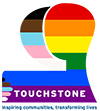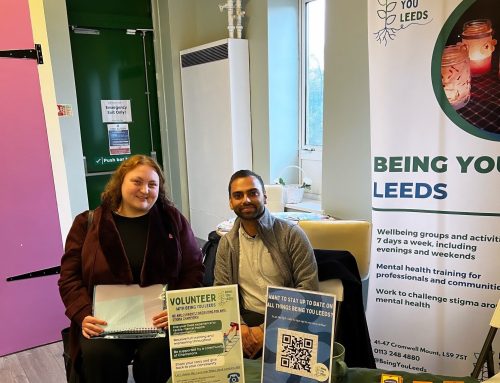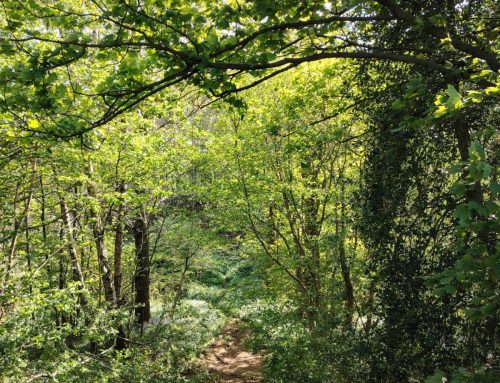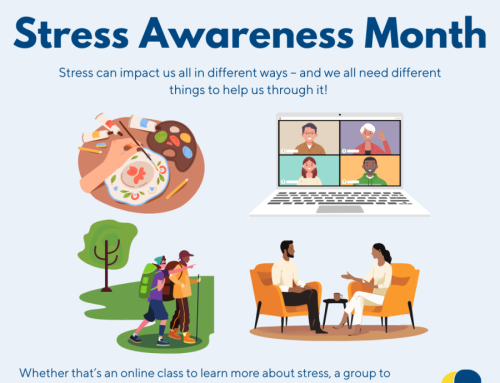July was Disability Pride Month. As July comes to an end and we enter August, some of Touchstone’s staff and volunteers have shared their personal thoughts and experiences to raise awareness around non-visible disabilities and how others can offer better support.
Before reading on, please note the following on the use of language within this blog:
The phrase ‘non-visible disabilities’ is preferred by some people with disabilities that are not obvious. Alternative words like ‘invisible’ can imply the disability doesn’t exist. Similarly, terms such as ‘hidden’ can imply a person is actively hiding their disability and ‘less visible’ doesn’t account for those whose condition is completely non-visible.
It’s important to recognise that some ‘non-visible’ conditions are sometimes visible or obvious. They can also sometimes be ‘seen’ by some people who might have a better understanding of the condition but they are often not visible to others. (Text adapted from the Disability Unit blog here)
However, the language used to describe a persons’ disability is also personal and individuals’ preferences should be respected. Throughout the below blog, our staff use a range of words, including ‘non-visible’ and ‘invisible’, to refer to their disabilities and experiences.
Below, our volunteer co-ordinator, Katie, shares her experience of having a stammer and how people can better support her. In particular, she notes the ‘social model of disability’ as a useful framework for people to think about how to help remove barriers in society for people with disabilities:
When I was in primary school I started to become aware that I didn’t speak like everybody else. At first, it didn’t bother me. As young kids, we are less aware of the perception of others, less afraid of embarrassment and judgment, so I just joined in anyway. It wasn’t until other kids started to become more aware of it, that I did. The class started to giggle, whisper between themselves and mimic my stammer; “K..K..Katie c-c-can you ppppppppass me-” (he’d burst out laughing before he could finish)

Katie Toulmin, Volunteer and Peer Support Coordinator
In secondary school, it wasn’t so much the other children who were the issue, it was the teachers. They would insist I spoke up, read aloud, stand in front of the entire class where it would take me 10 minutes to say a few words. I was full of self-hatred, shame, guilt, humiliation, chewing the inside of my mouth apart and swallowing tears.
Something my mum always used to say to teachers was: “if Katie had a physical disability, if she was in a wheelchair, would you force her to stand? It’s no different. She’s telling you she can’t do it, listen.”
What my teachers saw was a Katie who was chatty and outgoing with close friends, but they didn’t take the time to understand what stammering was and how deeply it affected me. They couldn’t see how debilitating it really was. It wasn’t until I was put under an extreme amount of pressure, in front of a room full of peers, that the teacher said “it’s ok, sit down” – she was holding back tears too.
According to Scope, “The social model of disability is a way of viewing the world, developed by disabled people. The model says that people are disabled by barriers in society, not by their impairment or difference.” For me, those teachers could have sat down with me and said, “what can we do? What do you need from us to make things easier?” But instead they assumed, “practice makes perfect!”, “she just needs to do it more.” The onus was on me to conform and do what my classmates were doing i.e., “no one likes public speaking Katie, but you’ve got to do it.”
It’s so important that people who have non-visible disabilities are seen, heard and believed. Even if you don’t fully understand what’s going on for that person, even if they “look” fine, never assume. Be patient, listen and be open to learning more and asking, “what can we do better?”
Invalidation is a common thread throughout the experiences shared by our staff and volunteers. Here, Shannen, a Peer Support Volunteer at Touchstone, shares her experiences of chronic pain and mental health struggles, including the invalidation she has experienced from others:
I guess my experience with having invisible disabilities is one fraught with invalidation and misunderstanding, like everyone else who also suffers with them.
For the chronic pain, I’ve often been invalidated, with people saying, “oh but you look fine” or “stop being dramatic, you’re young, it can’t be that bad”. People have treated me like an attention seeker, when the last thing I want while in pain is everyone looking at me.
As for my mental health struggles, yesterday I had to make the choice between folding my laundry and having a shower because I simply did not have the mental energy for both tasks. I have such envy for the people who will laugh at that and tell me it’s not hard to do both and that I am just being lazy, not understanding the tremendous amount of effort that goes into doing just one.
Rather than invalidating someone’s experiences, a much better way to respond to someone with a disability is to listen to them and what they need. Ruth, the Coproduction Administrator for Leeds Mental Wellbeing Service’s Inclusion team, has key words of advice on the most helpful things for other people to support them with their disability:

Ruth Armitage, Coproduction Administrator
Don’t rush me, be patient, and if I drop my stick, don’t pick it up for me, I can get it myself.
Similarly, respecting someone’s boundaries and not expecting them to give you their time and energy to explain their experiences is important. As Finn, a Peer Support Worker with Leeds Mental Wellbeing Services, notes, it’s important we respect how many ‘spoons’ another person has to share:
I wanted to write something about my experiences living with invisible disabilities, but unfortunately I don’t have enough ‘spoons’ to spare on it today. So instead I’d like to direct people to this useful video explaining ‘spoon theory’ in order to understand better what I, and others with disabilities, might mean when we speak of how many ‘spoons’ we have.
From spoons to building blocks, Stephanie, a Peer Support and Coproduction Administrator at Leeds Mental Wellbeing Service, has shared some thoughts on the ‘building blocks’ of resilience she’s gained from her experiences with chronic pain:
I think the most important thing I wish I had known before I started experiencing chronic pain was that it didn’t “end me” – I adapted.
I have good and bad days, and I have many happy days and moments too, just like everyone else. For me, life has changed with chronic pain, but it’s also stayed the same in many other ways. I still shop, I still walk, I still see friends and play games, but some days I cannot carry the shopping, some days I cannot play the piano, and some days having a shower is the biggest feat of my day.
Flareups can be rough, but if resilience was made of building blocks, then chronic pain has added some really unique and interesting ones to mine.
Lastly, our current CEO, Arfan Hanif, has shared his experiences with having a stammer and being labelled as bipolar. In particular, he notes the non-linear journeys experiences with disabilities can take and the importance to him of being able to be open about those experiences:
I didn’t realise until way into adulthood that I had more than one disability, albeit invisible to the world and even to me.

Arfan Hanif, CEO of Touchstone
For many years I had assumed disability is something that you see or is overt, such as physical or sensory disabilities. As an equal opportunities practitioner back in the day, I was involved in implementing the Disability Discrimination Act (1995) and it dawned on me that I had ‘impairment/s that had ‘substantial’ and ‘long-term’ negative effect on my ability to do normal daily activities.’ This included having a ‘secret’ stammer, which came out in a large public meeting. It broke my confidence and I was afraid subsequently to say anything in front of people (even though I had valuable things to say).
I required speech therapy and it was during this treatment my other unseen disability, related to my mental health, was drawn to my attention for the first time. At the time I didn’t believe it and no one gave a name for it. Fast forward about 15 years later, this second ‘hidden’ disability came out for the whole world to see, leading to a dark pathway of institutionalised hospital care and enforced treatment in the community. They called it ‘Bi-Polar’, a label the ‘system’ gave at the age of 42 – one I don’t agree with but alas I am now labelled.
It was only when I started to be open and share my invisible/hidden/secret disabilities I felt I could finally be my true self and be proud of what I am. I no longer have any shame and now see my invisible disabilities as assets and sources of power.
For those wanting to learn more about non-visible disabilities, please take a look below at the resources used in the article for further references:
The Disability Unit’s Non-Visible Disabilities blog
Scope’s Definition of the Social Model of Disability
Explaining Spoons Theory to Someone with or without a Chronic Illness
For background on the Disability Pride flag used as the featured image, please visit this link.





